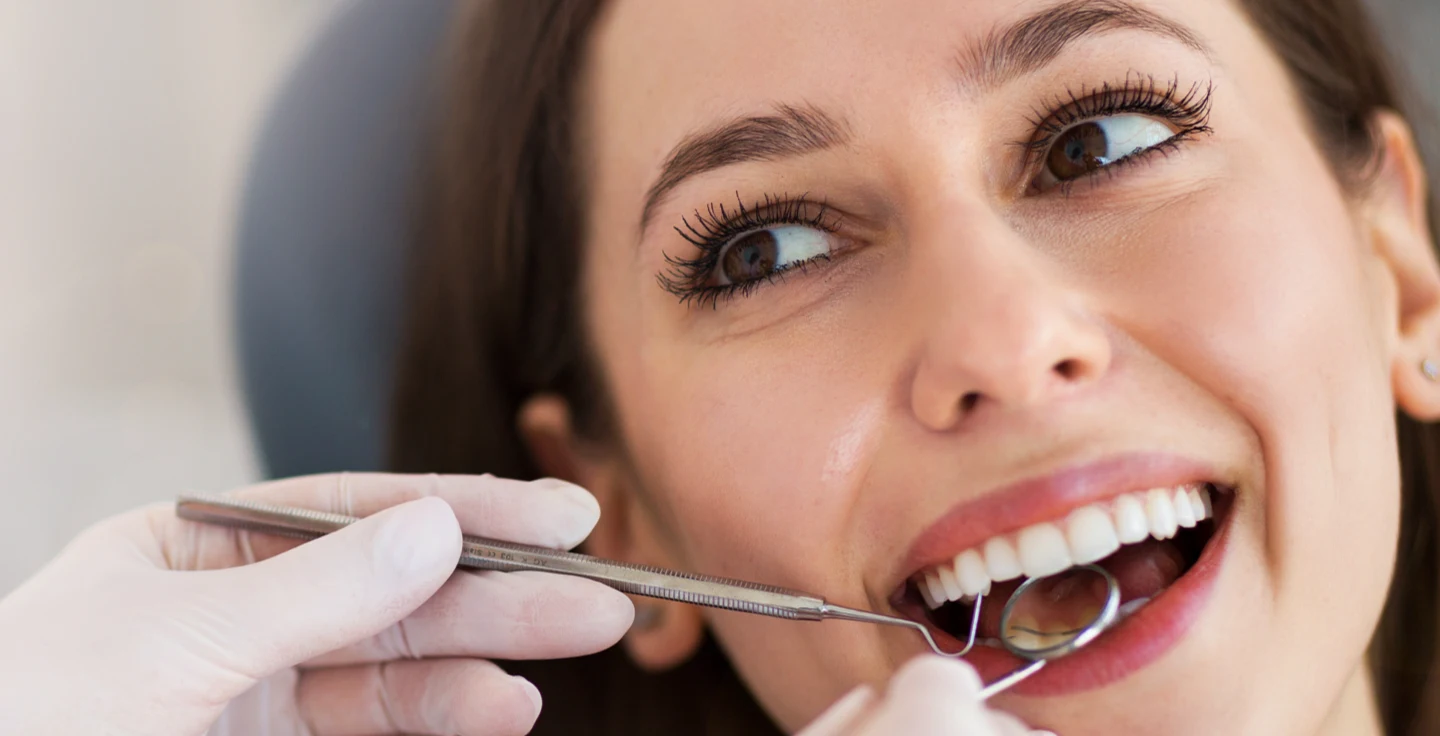A composite filling is a common type of dental filling used to repair decayed, chipped, cracked, or worn teeth. Unlike traditional amalgam metal fillings, composite fillings are made from a tooth-coloured plastic, resin, or ceramic-based material.
If you’re thinking of getting a composite dental filling, we’ll cover everything you need to know, including:
Different types of composite fillings
Whether a composite filling is suitable for you
Advantages and disadvantages of composite in teeth.
What types of composites are there?
There are a few different types of composite fillings. Here’s a breakdown of the main types:
Traditional composite
This is the original composite dental filling material, consisting of resin and glass fillers. It can require more aggressive tooth preparation for a secure bond than other types of composite filling, which can make it less suited to front tooth dental fillings.
Hybrid composite
An evolution of the traditional composite, hybrid composite incorporates additional filler particles. These fillers can be a combination of glass and ceramic materials to enhance the strength and wear resistance compared to traditional composites.
Nano-hybrid composite
Nano-hybrid composite is a cutting-edge material that combines nanoparticles for an even stronger, and more durable and more aesthetic filling. It’s often more expensive than traditional or hybrid composite dental fillings.
Flowable composite
Flowable composite is a more fluid type of composite filling with a lower viscosity. It’s suited to smaller cavities, pits, and fissures due to its ease of application, but it’s sometimes used by dentists as a liner under other types of composites, too.
When does a composite or plastic filling make sense?
Your dentist might recommend a composite or plastic filling as a solution for various tooth concerns.
Filling front teeth: Composite fillings are often used for repairing small and medium-sized tooth defects in front teeth. Due to their aesthetic tooth-coloured nature, composite fillings are the preferred choice for repairing visible teeth at the front.
Building worn teeth: If your tooth is slightly worn down due to grinding or erosion, composite dental fillings can be used to add material and restore the tooth's shape and size.
Molar cavities: Composite teeth fillings can also be used for cavities or minor fractures in the molars (your back teeth). For very large cavities or extensive damage in molars, your dentist might recommend a stronger and more durable material like a partial or full crown.
Sensitivity: If you experience tooth sensitivity, composite fillings can be used to cover exposed tooth roots to provide relief.
Unlike traditional metal fillings, plastic dental fillings are safe for treating pregnant women, who can’t tolerate amalgam.
Advantages of composite fillings
Composite fillings offer a multitude of benefits compared to traditional metal fillings. Here are some of the key advantages:
Aesthetics
Composite fillings are tooth-coloured, which means they’re more aesthetic than metal fillings. They blend seamlessly with your natural teeth for a discreet finish, which is especially important for fillings in the front teeth.
Versatility
Composite dental fillings have a wide range of uses, from small cavity repairs to larger cracks, worn tooth surfaces, and chipped tooth repair.
No know allergies
There are no known allergies to plastic fillings, unlike traditional metal fillings that can contain amalgam and mercury. This makes them a suitable treatment option for everyone.
Stronger bond
Composite fillings have improved durability compared to traditional filling materials. They chemically bond to the tooth structure, creating a stronger and more durable restoration. This helps them last longer, so it’s less likely you’ll need a replacement filling in the future.
Disadvantages of composite fillings
While composite fillings offer numerous advantages, there are also some drawbacks to consider when choosing your filling type.
Contracts during hardening
Composite fillings shrink slightly as they harden under the curing light. This can potentially lead to a micro gap between the filling and the tooth, which can require additional material or need refilling later on.
Longer placement time
It typically takes longer to place composite fillings than traditional metal fillings. This is because the dentist may need to layer the material and cure each layer individually with a special curing light.
Discolouration
Over time, composite fillings can stain or discolour due to things like drinking tea or coffee and smoking. While modern composites offer improved stain resistance, regular maintenance and good oral hygiene are crucial to keep your plastic fillings tooth-coloured.
Higher cost
Generally, composite dental fillings are more expensive than amalgam fillings. This can be a consideration if you’re on a tight budget, especially if you have multiple cavities that need to be repaired.
Limited insurance coverage
If you have dental insurance, some plans may not fully cover the cost of composite fillings, particularly for use in non-visible areas. It's important to check with your insurance provider to understand their coverage of composite dental fillings.
FAQs about composite fillings
How much is a composite filling?
Composite fillings typically cost between £100-200, depending on the severity of your case and the fees of your dental provider. Ask your dentist for the cost of a composite filling.
How does composite filling work?
Composite dental fillings use a tooth-coloured resin and filler combination that hardens with a curing light to repair cavities and cracks in your teeth.
How long does a composite filling last?
The average lifespan of a composite filling is 5-7 years, but they can last longer if you take care to look after your filling (and your teeth).
When can I eat after a composite filling?
You can usually eat right away after a composite filling. The filling hardens instantly with a curing light, which typically takes just a few minutes at the dentist.
